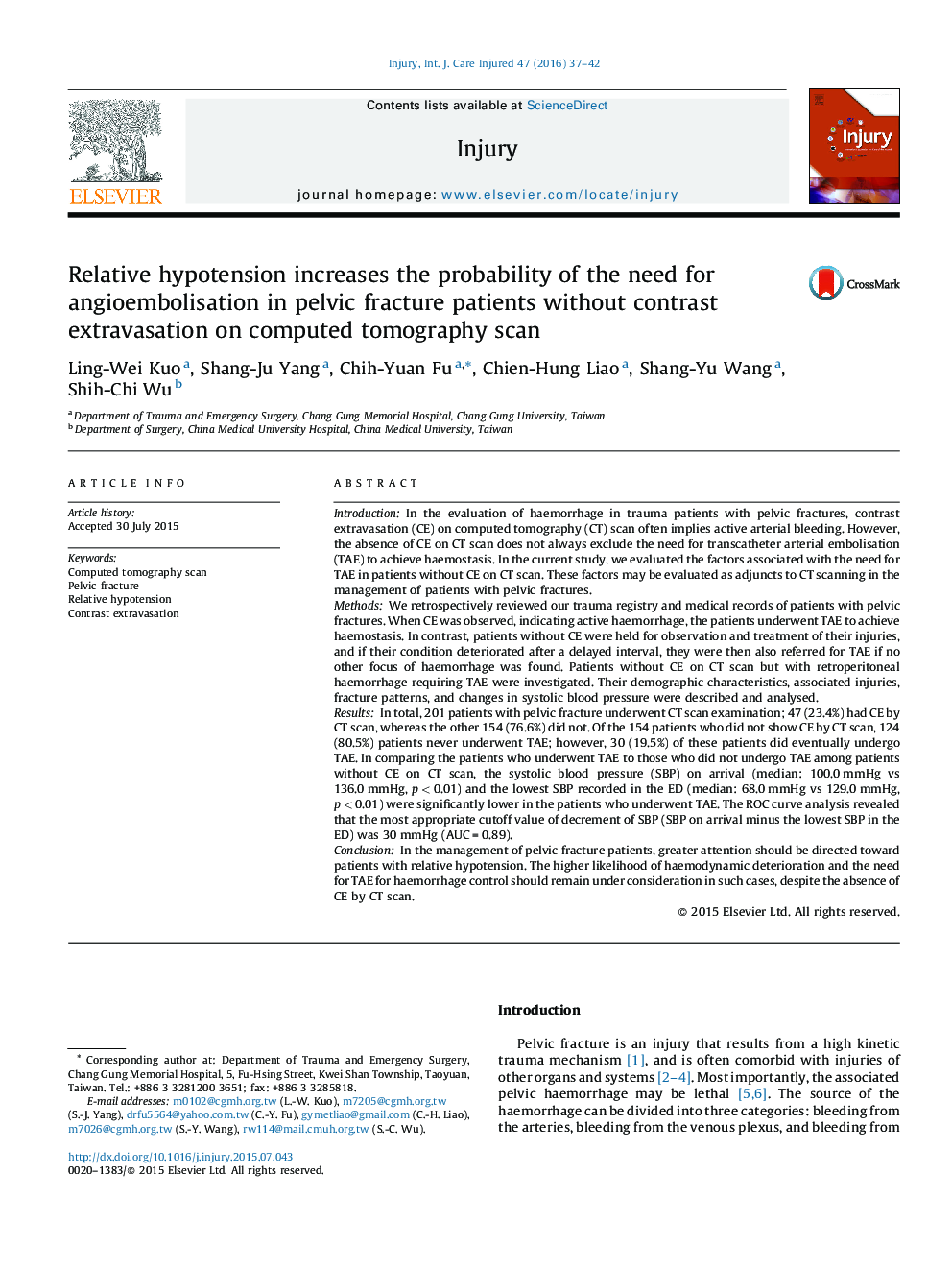| کد مقاله | کد نشریه | سال انتشار | مقاله انگلیسی | نسخه تمام متن |
|---|---|---|---|---|
| 6082860 | 1205978 | 2016 | 6 صفحه PDF | دانلود رایگان |
IntroductionIn the evaluation of haemorrhage in trauma patients with pelvic fractures, contrast extravasation (CE) on computed tomography (CT) scan often implies active arterial bleeding. However, the absence of CE on CT scan does not always exclude the need for transcatheter arterial embolisation (TAE) to achieve haemostasis. In the current study, we evaluated the factors associated with the need for TAE in patients without CE on CT scan. These factors may be evaluated as adjuncts to CT scanning in the management of patients with pelvic fractures.MethodsWe retrospectively reviewed our trauma registry and medical records of patients with pelvic fractures. When CE was observed, indicating active haemorrhage, the patients underwent TAE to achieve haemostasis. In contrast, patients without CE were held for observation and treatment of their injuries, and if their condition deteriorated after a delayed interval, they were then also referred for TAE if no other focus of haemorrhage was found. Patients without CE on CT scan but with retroperitoneal haemorrhage requiring TAE were investigated. Their demographic characteristics, associated injuries, fracture patterns, and changes in systolic blood pressure were described and analysed.ResultsIn total, 201 patients with pelvic fracture underwent CT scan examination; 47 (23.4%) had CE by CT scan, whereas the other 154 (76.6%) did not. Of the 154 patients who did not show CE by CT scan, 124 (80.5%) patients never underwent TAE; however, 30 (19.5%) of these patients did eventually undergo TAE. In comparing the patients who underwent TAE to those who did not undergo TAE among patients without CE on CT scan, the systolic blood pressure (SBP) on arrival (median: 100.0 mmHg vs 136.0 mmHg, p < 0.01) and the lowest SBP recorded in the ED (median: 68.0 mmHg vs 129.0 mmHg, p < 0.01) were significantly lower in the patients who underwent TAE. The ROC curve analysis revealed that the most appropriate cutoff value of decrement of SBP (SBP on arrival minus the lowest SBP in the ED) was 30 mmHg (AUC = 0.89).ConclusionIn the management of pelvic fracture patients, greater attention should be directed toward patients with relative hypotension. The higher likelihood of haemodynamic deterioration and the need for TAE for haemorrhage control should remain under consideration in such cases, despite the absence of CE by CT scan.
Journal: Injury - Volume 47, Issue 1, January 2016, Pages 37-42
